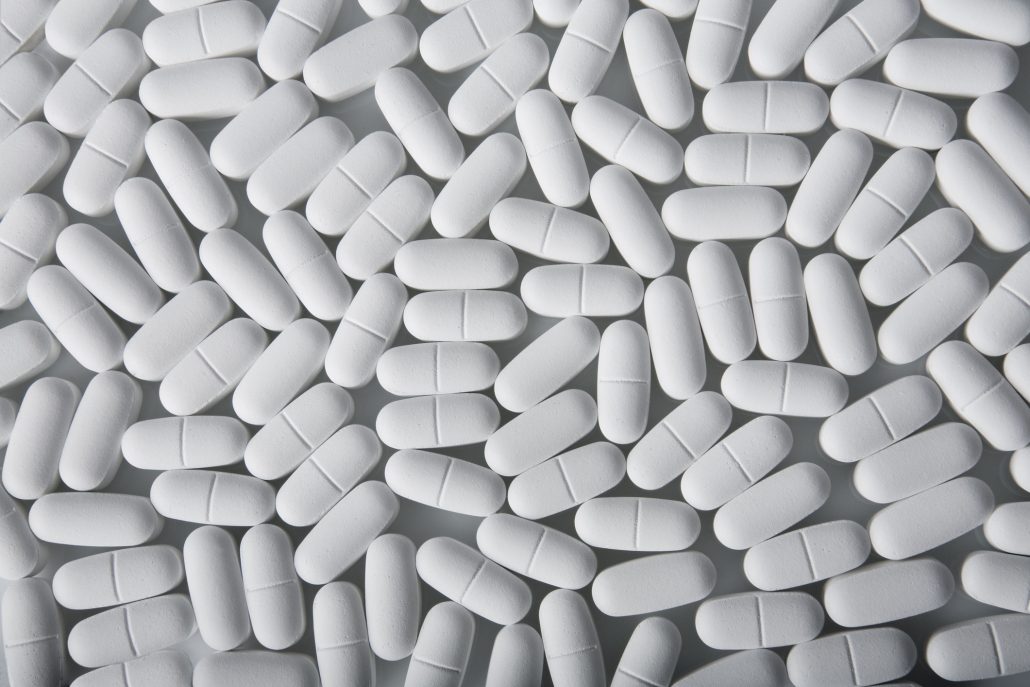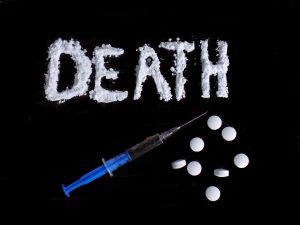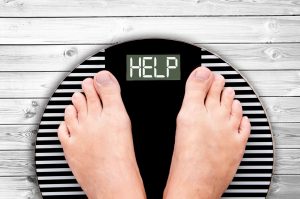by Sher Delva | Jul 11, 2017 | Addiction, Addiction Stigma, Addiction Treatment, Mental Health, Withdrawal

Just over five years ago, Ralph Bailey was in his home about to attempt suicide. His addiction had spiraled out of control, and he did not believe he could ever live a day without drugs and alcohol. Then, in a moment Bailey describes as a“divine intervention,” his sister happened to come by the house and stopped him.
The next day, Bailey checked into Palm Partners Treatment Center, a Palm Healthcare facility. Now five years sober, Bailey is a valued employee at Palm Partners and speaks regularly to clients about his journey overcoming his addiction.
Recently Bailey was a guest on The Real Deal On… with Dug McGuirk. Surrounded by lights and cameras, Bailey describes the feeling of sharing his story as a “full circle” moment. He remembers a time when the cameras were on him for an entirely different reason. He was under investigation.
“I remember back in 2010 when I caught a case, and the FBI came in with pictures and audio of me, and it looks just like this.” He says looking around the room. “Now, when I say full circle, it means I went from being prosecuted with these cameras and microphones to actually sharing my experience, strength and hope with these same microphones and cameras.”
Reflecting Back on his “Death Date”
When Bailey first walked into Palm Partners on May 12, 2012, he was broken. In fact, Bailey says the most important day of his sobriety is not the day he entered treatment, but the day he attempted suicide. He refers to this day as his “death date.”
“I was broken to the point where my sobriety date is May 12, 2012, but I always tell my story with my death date which is May 11, 2012. What I mean by that is May 11 is the day I decided to commit suicide,” he says.
At this point, Bailey had struggled with addiction most of his life. He did not believe he could live without drugs and alcohol, but he did not want to continue living like he was. Therefore, suicide seemed like the only way out.
“I didn’t like where I was, and I didn’t want to go back to where I’ve been, and I was too scared to move forward because I could never picture living life without drugs and alcohol, so my plan was to end it all.”
In a moment that Bailey describes as a “divine intervention,” his sister happened to stop by the house and prevent the whole thing from happening.
“For me, it was totally divine intervention because I was successful at everything and it just so happens that for my suicide attempt, I got stopped. My sister came over to my house and stopped the whole thing. That’s when I broke down and told her I needed help.”
To his surprise, his sister told him the entire family knew about his addiction. Up until that point, he thought his addiction had been a secret for the past 20 years.
“She gave me the biggest hug and said ‘This is what the family’s been waiting to hear. You wasn’t fooling nobody,’ And the whole time, I’m thinking I had everybody fooled [and] nobody knew I was getting high.”
Learning to Cope Without Drugs
From an early age, Bailey struggled with abusing drugs and alcohol. He started around eighth grade and said he could not remember a time he did not use drugs and alcohol before his sobriety date.
“I can’t picture a time when I didn’t live without either one, and that’s what got me here.”
Still, like many, Bailey did attempt to get sober on his own.
“I did what everybody tries to do which is the detox on the couch.” He laughs.
Like most who attempt this method, he was unsuccessful. He did not know how to cope with the emotional and physical withdrawals of not using.
“It worked out good for a couple hours until boredom came in, until I didn’t know what else to do besides use drugs and alcohol, so I had nothing to fill the void when I tried to stop and that’s kinda related to my attempted suicide because I didn’t know what to do so that’s when I finally said enough is enough”
Bailey credits the staff, especially the therapists at Palm Partners for helping him learn how to fill the void.
“They’re the ones that made me realize I had more than just a drug and alcohol problem. I had anger issues. I had family issues.”
Bailey entered treatment in his 40s, a later stage of life compared to many in treatment, but he did not let the age of those around him affect his recovery process. Instead, Bailey says he wanted to make up for all the time he had wasted.
“I’ve wasted so much time in my life,” he says. “At that point, I didn’t care if I was getting clean with 18-year-olds, 20-year-olds; my main concern was the end result. As long as that was the same, it was all I cared about, but the main thing: I was tired. I had enough”
Starting Over On a Clean Slate
Furthermore, Bailey says he went to treatment as a “blank sheet of paper” and allowed the therapists and staff to provide him “new blocks to build on.”
“I took everything I knew and threw it out and started over,” he says.
The therapists at Palm Partners gave him the toolbox he needed and allowed him to realize he had the tools all along.
“That’s why I always say be honest with your therapists while you’re here because they can’t help you if you don’t tell them what’s wrong.”
At treatment, Bailey learned valuable lessons like how to deal with life when it does not go the way you want:
“Incidences like not getting your phone or incidences where you want to do something and you can’t should be a tool as ‘Alright, well how am I going to cope with wanting something that everybody has and I can’t have mine?’ That’s the same [lesson] that helps me stay clean. ”
Bailey says the times he could not access his phone taught him patience and helped him realize ineffective character defects addicts struggle with.
“Addicts, first we are manipulative, and then when manipulation doesn’t work, we’re crybabies,” he affirms. “We throw temper tantrums when we don’t get what we want, but we can’t do that in the real world.”
Navigating Grief: Learning to Change Your State:
One of the most powerful lessons Bailey shared in the interview was how he dealt with the death of his brother. After hearing his brother had passed away, he did what most would not think to do at that moment: jumping jacks.
“I had to do something to change my state,” he explains.
In that moment of despair, Bailey remembered something he learned from clinical director Dr. Beley about the way the addict’s mind works.
“Your brain automatically wants to take care of you. It doesn’t want you to feel any pain, but you have a five-second window to make a decision before you go back to what’s comfortable,” he says.
Bailey remembered the way the brain operates in regards to pain. He knew if he did not change his state immediately, his mind would retreat to what was most comfortable.
“If I didn’t start doing jumping jacks right away, my brain would automatically click to get high because that’s how I cope with things so, in order to stop that, I started doing jumping jacks and was able to change my state and then actually think and dissect everything that’s going on. Then start with a clear head and then move forward.”
“It is so huge to be able to change your state. You have to,” he says.
—
Ralph Bailey went from a hopeless drug addict to an inspiration of strength to those struggling in recovery. Throughout the interview, Ralph Bailey further elaborates on the importance of having a higher power, going to meetings and giving back. He talks about positive affirmations and further defines how to overcome negative situations through changing your state. We highly suggest you listen to the full interview for more on his journey.
“I never realized I was in a cocoon. I flourished, I came out of it, and it’s like wow, “he concludes.
If you are currently struggling in recovery, just remember that it is never too late to seek help. Even if you believe otherwise, recovery is possible. You do not have to live every day wondering where your next high will come from. Instead, you can regain control of your life like Ralph Bailey did. We want to help you. If you or someone you love is struggling, please call toll-free now.
CALL NOW 1-888-922-5398
by Sher Delva | Jun 22, 2017 | Addiction, Addiction Medicine, Addiction Stigma, Addiction Treatment, Stigma, Therapy, Withdrawal
 The opioid epidemic continues to reach epidemic numbers, and with the increasing overdoses comes increasing cases of hepatitis C. New cases of hepatitis C have nearly doubled over the past few years. Furthermore, those with opioid addiction are more likely to suffer from a variety of health disorders, complicating treatment for substance use disorder.
The opioid epidemic continues to reach epidemic numbers, and with the increasing overdoses comes increasing cases of hepatitis C. New cases of hepatitis C have nearly doubled over the past few years. Furthermore, those with opioid addiction are more likely to suffer from a variety of health disorders, complicating treatment for substance use disorder.
Hepatitis C is among the most concerning disorder to affect people with opioid addiction. People who abuse opioids are 9.1 times more likely to have hepatitis-C (HCV), in comparison to those who did not abuse opioids, according to an analysis by the health care company Amino. Amino drew data from the claims of 3.1 million privately insured patients between 2014 and 2016.
As the opioid epidemic spreads throughout the country, new cases of HCV have skyrocketed. In 2014, there were an estimated 30,500 new cases in the United States. This is nearly double the number of new cases in 2011, according to STAT News.
The CDC reports that new HCV infection is rising specifically among intravenous drug users under 40 years old, particularly in more rural areas. People with opioid use disorder are more likely to drink to excess, and more likely to have suicidal ideation.
While these numbers are shocking, many are not surprised:
“It’s known that people with co-occurring behavioral and mental health issues are at high risk for addiction even when prescribed opioids for a bonafide prescription medical use,” Dr. Anna Lembke, a Stanford University psychiatrist, and opioid addiction expert, told Amino.
However, Lembke was particularly moved by the fact that people with opioid addiction are seven times more likely to suffer from “failed back syndrome,” a chronic condition that is diagnosed following back surgeries.
“What I thought was really interesting was the correlation with failed back syndrome,” she said. “Perhaps failed back syndrome is a risk factor for developing an opioid use disorder—and that could be part of the reason why this community experiences such chronicity and lack of improvement. This is a subgroup that’s especially vulnerable to opioid misuse.”
The data collected by Amino looked at health claims among people with a variety of insurance codes, representing conditions from opioid dependence to opioid abuse in remission. Amino is a private insurer, and the data revealed a sharp increase in opioid abuse specifically among those with private insurance. According to the data, there was a six-fold increase in opioid-related insurance claimed between 2012 and 2016 among private insurers.
However, Lembke notes that this sharp increase may be underrepresented:
“Patients don’t want to carry them on their charts, and doctors don’t want to stigmatize their patients,” said Lembke. “But they will go ahead and chart it if there’s utility in it. And the utility is you can’t get buprenorphine, methadone maintenance, or naltrexone paid for by a third-party payer unless it’s diagnosed.”
Last month was Hepatitis Awareness Month. The treatments for hepatitis C have really come a long way, and it no longer as life endangering as It once was. The key is to seek treatment early. Unfortunately, due to the stigma of addiction, many are afraid to get tested.
Studies like these show that the numbers are not improving. Those with opioid addiction seriously need testing to prevent the disease from progressing any further. Please do not feel shame about testing for this disorder. Furthermore, if you are struggling with substance use disorder, please reach out to us. We have the tools to guide you to a sober life. Do not wait. Call today.
CALL NOW 1-888-922-5398
by Sher Delva | Jun 20, 2017 | Addiction, Addiction Stigma, Drug Abuse, Mental Health, Prescription Drugs, Stigma, Therapy, Uncategorized, Withdrawal
 Yesterday, we covered recent coroner reports that revealed that actress Carrie Fisher has drugs in her system days before her death. The toxicology reports found evidence of heroin, MDMA along with cocaine in her system.
Yesterday, we covered recent coroner reports that revealed that actress Carrie Fisher has drugs in her system days before her death. The toxicology reports found evidence of heroin, MDMA along with cocaine in her system.
It’s estimated that cocaine was used three days before her death. However, it remains uncertain when the heroin and MDMA were used. Still, despite the discovery, the coroner’s office cannot determine whether or not drugs played a role in Fisher’s death. A variety of other factors such as a heart condition affected the actress as well. Therefore, a cause of death could not be determined.
Daughter Tells It Like It Is
Now, Billie Lourd, the only child of Carrie Fisher, recently opened up to media outlets to confirm what the coroners cannot: her mom died from drug addiction. While this is far from surprising for her fans, Lourd’s bold act of ownership is what her Mom would have wanted.
Carrie Fisher has always made an effort to publicize her journey with mental illness and addiction. She was diagnosed with bipolar disorder at just 24 years old and battled a serious drug addiction most of her life.
Lourd made an emotional statement regarding her mother. While reports stated it was uncertain whether drugs caused her death, Lour was less ambivalent, declaring that she was certain her mother died due to her drug use.
“My mom battled drug addiction and mental illness her entire life,” Lourd said in a statement to People magazine. “She ultimately died of it. She was purposefully open in all of her work about the social stigmas surrounding these diseases.”
“She talked about the shame that torments people and their families confronted by these diseases. I know my mom. She’d want her death to encourage people to be open about their struggles. Seek help, fight for government funding for mental-health programs. Shame and those social stigmas are the enemies of progress to solutions and ultimately a cure. Love you, Momby.”
Carrie Fisher: Forever an Advocate
Carrie Fisher has always been one of the most powerful advocates for people struggling with substance use disorders. She used her fame from the Star Wars franchise to stimulate discussion and awareness about drug addiction, mental illness and the challenges of recovery.
“I did drugs because they alter you in a way you can’t alter yourself if you’re not comfortable in your own skin,” she told Mirror Online in 2015.
The actress admitted she used drugs as self-medication for her bipolar disorder. She stated that she was not ashamed about her mental illness, and instead hoped more people would come forward seeking treatment.
“One of the things that baffles me (and there are quite a few) is how there can be so much lingering stigma with regards to mental illness, specifically bipolar disorder. … At times, being bipolar can be an all-consuming challenge, requiring a lot of stamina and even more courage, so if you’re living with this illness and functioning at all, it’s something to be proud of, not ashamed of,” she said In her 2008 memoir, Wishful Drinking.
Results of Toxicology Report
A full autopsy report was not conducted at the request of Fisher’s family. The toxicology report stated it was uncertain whether substances played a role in her untimely death.
“Based on the available toxicological information, we cannot establish the significance of the multiple substances that were detected in Ms. Fisher’s blood and tissue, with regard to the cause of death,” stated the report.
Lourd is taking the extra step to confirm what most try to disguise. Carrie Fisher was never ashamed to discuss her struggles with addiction. She was a voice to those who feared to come forward. If you struggle with addiction, mental illness or both, please reach out. Call now. We want to help.
CALL NOW 1-888-922-5398
by Justin Mckibben | Jun 20, 2017 | Addiction, Drug Abuse, Prescription Drugs, Withdrawal, Xanax

Xanax is a brand name of the drug Alprazolam; one of the most popularly prescribed medications in the country, and yet it is associated with plenty of side-effects and very serious health problems. In the benzodiazepine (benzo) category of medications Alprazolam is the most prescribed and often most abused substance on the list. Xanax is used to treat:
It is also prescribed to be used as a muscle relaxer, stress reliever and sleep aid. However, it has earned its name on the DEA list of schedule IV controlled substances, and comes with a laundry list of side effects. These side effects will vary in frequency and intensity depending on many factors. Some are more common, while others are indications of a more serious health risk.
What Are the Side Effects of Xanax: Common
The more moderate side effects of Xanax include:
- Ataxia
- Cognitive dysfunction
- Constipation
- Drowsiness
- Decreased sex drive
- Irritability
- Feeling light headed
- Slurred speech
- Fatigue
- Memory impairment
- Weight gain/loss
- Blurred vision
- Insomnia
- Changes in appetite
What Are the Side Effects of Xanax: Less Common
There is a very extensive list of side effects people have reported in connection to Xanax that are less common. Some of these side effects of Xanax include:
- Abdominal/stomach pain
- Body aches
- Drastic behavioral changes
- Chills
- Confusion
- Cough
- Decreased frequency and/or volume of urine
- Diarrhea
- Dry mouth
- Ear congestion
- Fainting
- Fear
- Headache
- Hyperventilation
- Irregularities with eyes
- Restlessness
- Irregular heartbeats
- Itching
- Joint pain
- Loss of bladder control
- Nausea
- Painful urination
- Rash
- Hallucinations
- Shaking/Shivers
- Sweating
- Swollen joints
- Tightness in the chest
- Uncontrolled movements
- Unpleasant breath odor
- Wheezing
- Yellow eyes or skin
What Are the Side Effects of Xanax: Severe
There are also some side effects that are listed that are more severe than others. Some of these should be taken extremely serious, and can be signs of a much more severe and potentially life-threatening condition.
- Depression
- Suicidal thoughts
- Vomiting Blood
- Chest pains
- Breathing problems (deep and slow or fast)
- Ear pain
- Irregular heartbeat
- Feeling unusually cold
- Hearing loss
- Lack of feeling or emotion
- Loss of control of limbs
- Nightmares
- Numbness
- Severe sleepiness
- Swelling
- Seizures
In 2012, a study released by SAMHSA found that benzo drugs like Xanax accounted for around 35% of drug-related visits to hospital emergency and urgent care facilities.
What Are the Side Effects of Xanax: Withdrawal Symptoms
Xanax works very fast and has a relatively short half-life, which causes withdrawal symptoms to begin very rapidly once the individual discontinues their use, which is why a Xanax addiction detox program is so important. Most people will start to feel withdrawal symptoms within 12 hours once they stop using Xanax, and those symptoms will peak within 3-4 days. Residual and long-term symptoms of withdrawal can even last for up to months at a time.
Going through a medical Xanax addiction detox program is so important because of the severity of some of these symptoms, especially in combination with other substances such as alcohol which will increase the discomfort. The most common withdrawal symptoms from Xanax include:
- Headache
- Blurred vision
- Muscle aches
- Tension in the jaw and/or teeth pain
- Nausea
- Vomiting
- Diarrhea
- Numbness in fingers
- Tingling in limbs
- Sensitivity to light and sound
- Alteration in sense of smell
- Loss of appetite
- Insomnia
- Cramps
- Tremors
- Heart palpitations
- Hypertension
- Sweating
- Fever
- Impaired respiration
There are other side-effects that happen when combining Xanax with other substances, especially with other depressant type drugs such as alcohol. When combining Xanax with alcohol, it can create even more serious health problems, like:
- Behavioral changes
- Intoxication
- Severe sedation
- Psychomotor agitation
- Seizures
- Coma
- Death
Withdrawal from either substance can be risky, but the combined effects can be lethal.
What Are the Side Effects of Xanax: Important Factors
When it comes to the Xanax side effects, or side effects for any drug, there are important factors that come into play. For instance, the amount of the substance used matters. If someone takes a higher dose of Xanax more frequently, they will most likely experience side effects different than someone who takes lower doses less frequently. The method of use can also impact the side effects.
Also, any additional substances or medications being used along with Xanax can cause the side effects to become more severe. Someone combining Xanax with other sedatives may experience side effects in a different way than someone combining Xanax with stimulant drugs.
Finally, side effects may also vary for anyone dealing with pre-existing health conditions or co-occurring mental health disorders. If an individual already has kidney or lung problems, their side effects may be very different than someone who is physically healthy but struggles with a mental illness like bipolar depression.
What Are the Side Effects of Xanax: Addiction
Out of all the side effects for Xanax, addiction is definitely a serious problem. Developing a physical dependence that then evolves into a substance use disorder can not only cause extensive damage to the individual’s life, it can exacerbate all other side effects and symptoms.
Extended use of a drug like Xanax can cause new health problems. With the brain, benzo drugs can cause malfunctions in coordination and damage brain cells. It can affect how the brain operates and have lasting psychological effects. One of these can be the cravings for the drug, as well as dramatic mood shifts.
Some research published in 2016 actually suggests that long-term use of benzodiazepine drugs like Xanax significantly increases the risk for brain, colorectal, and lung cancers.
Addiction is something that doesn’t only manifest in a physical form. Drug addiction also takes a mental and emotional toll. All the effects can be extremely difficult to overcome, and can even be dangerous when unmonitored. Anyone trying to overcome Xanax addiction should attend a safe medical detox program. Even with some prescriptions of symptom controlling medications, a quick detox can be very tough and uncomfortable. A drastic drug detox should never be attempted without medical supervision.
With Xanax addiction treatment, there should be a strong medical staff to assist in a comfortable transition from active substance abuse. There should also be levels of personal and professional therapy and a specialized team dedicated to designing an aftercare program that meets the specific elements of a long-term recovery plan. If you or someone you love is struggling, please call toll-free now.
CALL NOW 1-888-922-5398
by Sher Delva | Jun 9, 2017 | Addiction, Addiction Stigma, Addiction Treatment, Drug Abuse, Withdrawal

Drug Overdose Now Leading Cause of Death for Americans Under 50
The numbers are in. Drug overdoses are the leading cause of death for Americans under the age of 50.
Not car crashes or cardiovascular disease… drug overdoses.
To put the opioid crisis in perspective:
Opioid deaths have now surpassed:
Comparing those numbers to recent tragedies like the Pulse Night Club Attack, there would have to be three mass shootings every day for 365 days to roughly equate to the number of drug overdoses in 2015.
Officials across the country declare the drug overdose epidemic as a public health crisis. In the past decade or so, the numbers of fatalities related to drug overdoses have soared.
Deputy Attorney General Rod Rosenstein officially announced the statistic on drug overdoses Tuesday to the media. Chuck Rosenberg, acting head of the Drug Enforcement Agency, and other prominent officials in law enforcement also addressed the media at the DEA’s headquarters in Arlington, VA.
“We’re not talking about a slight increase. There’s a horrifying surge of drug overdoses in the United States of America. Some people say we should be more permissive, more tolerant, more understanding about drug use. I say we should be more honest and forthcoming with the American people on the clear and present danger that we know face,” opened Rosenstein.
“Fentanyl is especially dangerous. It is 40 to 50 times more deadly than heroin. Just two milligrams, a few grains of salt, an amount you could fit on the tip of your finger, can be lethal. Fentanyl exposure can injure or kill innocent law enforcement officers and first responders. Inhaling a few airborne particles can have dramatic effects,” he continued.
Despite such a bleak update, there was an air of optimism. Rosenberg spoke extensively with his Chinese counterparts in law enforcement about reducing fentanyl distribution. China is the major source of fentanyl that enters America. According to Rosenberg, the Chinese government banned 116 synthetic opioids for export and four more after his trip to China this March. Additional synthetics are scheduled for banning in the future.
“I do not want to understate such gains, nor do I want to overstate them,” he cautioned.
Still, we need more progress in international cooperation, he explained.
Rosenberg and other law enforcement officials assessed the challenges behind training first responders and admit that such efforts would stretch the limited resources available for fighting such an overwhelming epidemic.
Rosenberg’s daunting assessment of fentanyl put in perspective the existential danger of the ongoing opioid crisis. Rosenberg continues to reiterate the paths made thus far, but there is much more progress needed to improve the dire situation.
Overall, it is difficult to fully grasp the scope of the opioid epidemic. These statistics often “wash over” our minds, Rosenberg admits. If you or someone you know is currently struggling with opioid addiction, you know more than anyone how tragic and helpless it can be. Those who do not have a personal experience often struggle to understand these numbers.
However, the numbers do not lie. In Florida alone, every 15 hours last year, someone died of an opioid overdose in Palm Beach County, nearly double the rate of murders and fatal car crashes.
Addiction is a disease and needs treatment. We need to raise awareness, not stigma. More and more people are losing their lives to overdoses. The stigma has to end. If you are someone you know is struggling with drugs or alcohol abuse, please call now. You are not alone. You need help. Call today.
CALL NOW 1-888-922-5398
by Sher Delva | Jun 5, 2017 | Addiction, Addiction Stigma, Detox, Drug Abuse, Mental Health, Stigma, Therapy, Withdrawal

If you have gained a significant amount of weight after rehab, rest assured you are not alone. Like the freshman 15, gaining weight is practically expected. In fact, 65 percent of people gain weight after leaving rehab. Even more struggle with eating disorders, compulsive overeating, or what is now known as “food addictions.” What is the correlation and how can we get to the bottom of this?
First, we must look at the brain. Drug addiction and overeating have similar effects in the brain. When you were using drugs, it released happy chemicals like dopamine and serotonin which made you feel good. After becoming sober, you may find that you use food to acquire those same happy chemicals.
You might try to “replace” the high you felt from drugs with unhealthy foods. Foods high in fat, sugar, and calories tend to initiate a quick dopamine response in the brain. Unfortunately, like drugs, this happy feeling does not last long. Eventually, you crash and then try to eat again to achieve that same feeling. Substituting food for drugs or alcohol may lead to compulsive overeating and yes, weight gain.
Weight gain can be a source of personal suffering for some, and may even lead to a relapse. It can also contribute to health consequences like heart disease, high blood pressure, and diabetes. It is important to address the reasons why you have gained weight in recovery. Nutrition is crucial in the early stages of recovery, so it is important to recognize when you are not taking care of yourself properly.
Five common reasons people struggle with weight gain during recovery:
-
Stress
Stress is a risk factor for overeating. In the early stages of recovery, you may find yourself under a lot of stress, and now you do not have your drug of choice to mask those feelings. Research has shown time after time how stress can lead to overeating. For many, stress can lead to compulsive overeating and obesity.
-
Lack of Dopamine
One major reason for overeating is a lack of dopamine receptor in the brain. When the brain is low in dopamine, it affects impulse control and emotional regulation. Most people with any addiction have a lack of dopamine in the brain. The brain does not instantly recover once you stop using. In the absence of drugs for this reward mechanism, food becomes the next best thing. Weight gain inevitably follows.
-
History of Eating Disorders
Another reason for weight gain is a history of eating disorders before entering rehab. Dual diagnosis in rehab is extremely common. Many enter rehab with other psychological conditions including eating disorders. Almost 40 percent of women in recovery meet the criteria for an eating diagnosis. Men in treatment also experience binge eating and weight gain, especially in the beginning as they seek to satisfy cravings for drugs and alcohol. Few treatment centers screen their clients for eating disorders, so this is often not addressed once the recovering addict exits treatment.
-
Untreated Depression or Anxiety
As stated above, dual diagnosis is very common in treatment. Many addicts enter treatment with a history of anxiety and depression. Treatment for mood disorders can help reduce the risk of overeating related to these co-occurring disorders. Often, anxiety and depression can lead a person to overeat in an attempt to relieve themselves of these emotional hardships. Overtime, overeating occurs which leads to weight gain.
-
Nutritional Deficiencies
In some ways, weight gain after recovery is not a bad thing. Many recovering addicts are nutritionally deficient after detoxing from drugs. Chances are, there eating behaviors and lifestyle choices were not healthy while using. Eating can be a way of restoring your mind and body back to health. It is important to eat the right foods, however overstressing about weight gain should not be your main concern after leaving treatment. Your body may just be in a healing process. Your priority should be staying sober.
Despite the importance of nutrition in recovery, it is uncommon for treatment facilities to address it. It is important to go to a facility that incorporates wellness into the recovery process. While in treatment, take steps to eating healthy and exercising so that it becomes a lifestyle change upon leaving treatment.
There are steps that you can take to improve your overall health and well-being. Talk to your doctor about supplements you can take to help make the process easier. We encourage you to develop a healthy eating and exercise plan while you are in treatment. The staff at your facility may be able to help you along this process.
Overall, being mindful of your health while in treatment and after treatment is important. If you have gained weight after rehab, do not fret. Simple changes can turn it all around.
CALL NOW 1-888-922-5398

 The opioid epidemic continues to reach
The opioid epidemic continues to reach  Yesterday,
Yesterday, 



